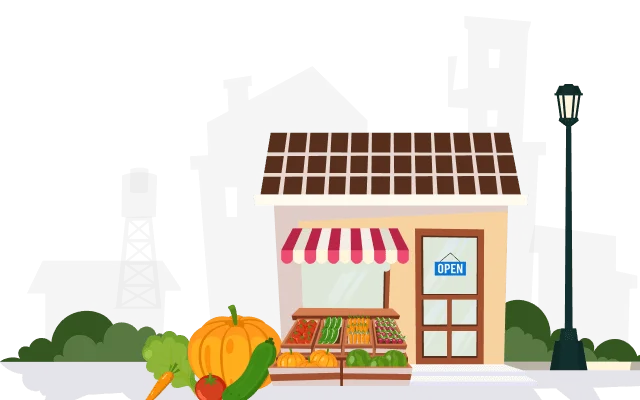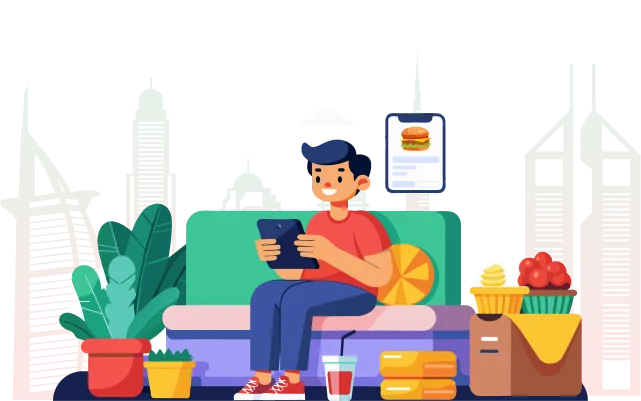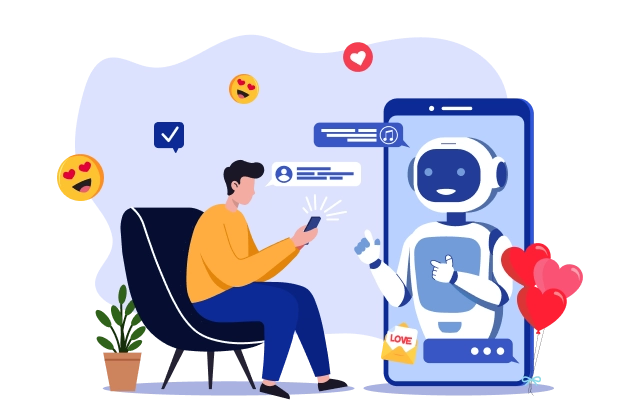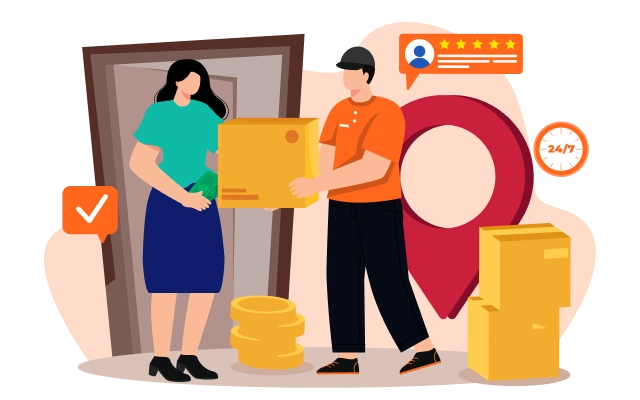On-demand grocery delivery apps are a boon as they provide outstanding user convenience. One such platform that prioritizes the q-commerce model is Blinkit. Operated on an ultra-fast delivery business model, the Delivery Anything app provides daily essentials to customers to their doorsteps in 10 to 20 minutes. Read this blog to find out more about Blinkit business model, working, and revenue strategy.
What is Blinkit?
Formerly known as Grofers, Blinkit Commerce Private Limited is an Indian quick commerce service that aims to solve the problems of merchants and customers associated with the unorganized sector nature.
Albinder Dhindsa as well as Saurabh Kumar introduced an on-demand grocery delivery platform -Blinkit in 2013. Headquartered in Gurgaon, the company provides access to thousands of daily essentials in 30+ Indian cities.
The platform completes approximately 4000 thousands of orders each day. Zomato acquired a struggling grocery delivery startup, Blinkit for $568 million in an all-stock deal; this acquisition was finished on 10 August 2022. Let's check more about Blinkit by going through the success timeline.
| Aspect | Details |
|---|---|
| Headquarters | Gurgaon, India |
| Delivery Promise | 10-minute delivery in 30+ cities, 15-minute delivery in Gurgaon |
| Key Milestones | July 2021: Launched 15-minute
deliveries in Gurgaon (7,000 orders/day)
August 2021: Launched 10-minute deliveries in around 12 cities |
| Daily Orders | November 2021: 1.25 lakh (125,000) orders per day |
| Mobile App | Allows customers to order groceries and essentials |
| Dark Stores | June 2024: 639 dark stores; is planning to launch 2,000 by 2026 |
| Major Investors | SoftBank, Tiger Global, Sequoia Capital |
| Funding Raised | By the end of 2021: Approximately US$630 million |
| Acquisition | August 2022: Acquired by Zomato for US$568 million in an all-stock deal |
| Legal Issues | December 2021: Trademark dispute over the name "Blinkit"; trademark application filed |
| Safety Concerns | August 2021: Faced criticism over 10-minute delivery safety; CEO Albinder Dhindsa defended the safety of the delivery mechanism |
| Labor Issues | April 2023: Strike by delivery partners in Delhi NCR due to reduced earnings, leading to temporary closure of many dark stores |
| Food Safety Violations | June 2024: FSSAI raid uncovered violations in a Blinkit warehouse in Telangana (expired products, unhygienic storage, suspected infestation) |
| Layoffs | March 2022: Fired 1,600 employees to cut operational costs |
| Zomato’s Support | 2022: Zomato gave Blinkit a $150 million loan before the acquisition |
| Future Goals | By 2026: Expand dark stores to 2,000 |
I hope you've enough details about Blinkit, now let's take our journey one step ahead and have in-depths into a Blinkit business model and revenue strategy.
Blinkit Business Model: How Blinkit Works?
The number of users who prefer online grocery delivery has increased and reached 2 million by 2029. The revenue of the market is set to reach US 770 billion dollars by 2024, growing at 11% CAGR between the forecasted period.
Numerous uptrends favor the market growth, including:
- Immediate delivery
- Same-day delivery
- Next-day delivery
- Contactless delivery
- Click and collect option
Increasing customer demand has encouraged small-scale grocers to collaborate with third-party delivery platforms like Instacart, Gojek, and more.
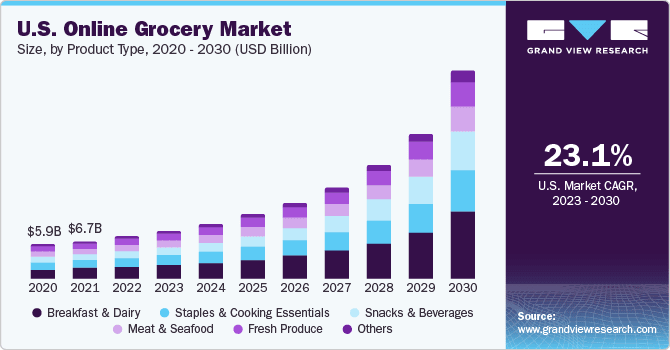
Source:
Grand View ResearchOne such ultra-fast delivery platform that gained popularity after its launch is Blinkit. Indian on-demand grocery delivery platforms enable customers to purchase daily essentials to get them delivered to their doorsteps. Let's explore more on how Blinkit works to meet the growing customer demand for fast delivery.
Customer Places an Order
Customers can visit https://blinkit.com/ or download the Blinkit Google or Apple App to register and log in. After finishing the process, they can browse various categories to search for the daily essentials they want.
Be it any items for your day-to-day needs, everything is just a click away. Add the item to the cart and wait for confirmation of the delivery order.
Order Assigned to the Nearest Dark Store
The process of Blinkit's delivery depends on a micro-warehouse location. Once the customer places the order, the nearest dark store receives it. They confirm the order and prepare the delivery items for further stages.
Order Picking and Handing it Over to Delivery Provider
Blinkit employees pick items from the dark store and prepare them for delivery to complete the order within 10 to 20 minutes. The packed product is then handed over to the delivery person stationed nearby. This saves delivery time.
Real-Time Tracking
Once the order is dispatched from the dark store, customers can track it on their palm-size device. They can track delivery partners' location, ETA, and more.
Delivery
Partners take the nearest optimized routes to complete the delivery on time within 10 to 15 minutes. After receiving the location, the delivery rider hands over the order to the customer.
Customers pay through cash or other available digital options and give the delivery person feedback.
Ultra-fast Blink business model encourages you?
Want to launch your grocery delivery app to meet growing customer demand? Our experts can help you make your dream project come true.
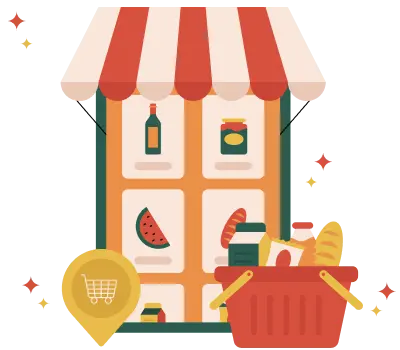
Blinkit Business Model Breakdown
The business model of Blinkit depends on a fast delivery mechanism. The company has warehouses that are stocked with high-demand items, helping the platform complete the order quickly. Below is more about Blinkit's business model, from value proposition to hyperlocal strategy, and more.
Core Value Proposition
The business model of Blinkit aims to provide convenience to its customers by delivering the order as soon as possible. It's very beneficial for those who value time. This model replaces the need for customers to travel to grocery stores and even helps them avoid delivery time.
Hyperlocal Fulfillment Strategy
When talking about Blinkit, how can we forget to highlight its hyperlocal fulfillment strategy?
The on-demand grocery delivery giant operates on a hyperlocal delivery model. "Dark Stores" and "micro-fulfillment" of Blinkit positioned across major areas, help them to complete the delivery faster.
These warehouses contain all the known items, helping the nearby positioned delivery partner to collect and complete the order within 15 to 20 minutes. Besides, it also helps to reduce traveling distance for riders. This helps Blinkit to reduce delivery costs and meet the competitive market demand efficiently.
How Does Blinkit Work: Strategic Insight!
A Blinkit business model is based on various strategies that help the company differentiate itself from other on-demand grocery delivery partners in the market. Let's explore how this strategy helps Blinkit contribute to its success.
Data and Predictive Analytics Usage
The use of data and predictive analytics helps Blinkit to track local demand trends. Besides, it also helps the company to know what its customers often order, helping to manage stock levels in its dark stores. The use of modern tech helps Blinkit to reduce waste and enhance fulfillment accuracy.
Operational Efficiency
The Blinkit model guarantees seamless commuting among buyers, warehouses, and delivery riders. Known grocery delivery giant maintains its operational efficiency with route optimization and real-time tracking technology. On-time delivery with modern tech and platform use by delivery provides results in improved customer experience.
Gig Economy Model
The revenue model of Blinkit is based on the gig economy, helping an on-demand grocery delivery company to adjust their pricing during peak or premium delivery slots. This enables the company to manage high demand and enables profitability even during premium delivery slots.
Broader Categories
Besides groceries, the Business model of Blinkit helps the company to expand its offerings, including:
- Baby products
- Personal care
- Electronics
- Kitchen appliances
- Pet products
Multiple product availability helped Blinkit to gain the title of a go-to platform or super app for day-to-day requirements.
Blinkit Revenue Model: How On-demand Grocery Delivery Company Makes Money?
The revenue model of Blinkit is borrowed from the gig economy, helping the company to generate ₹13.12 Billion in the present year.
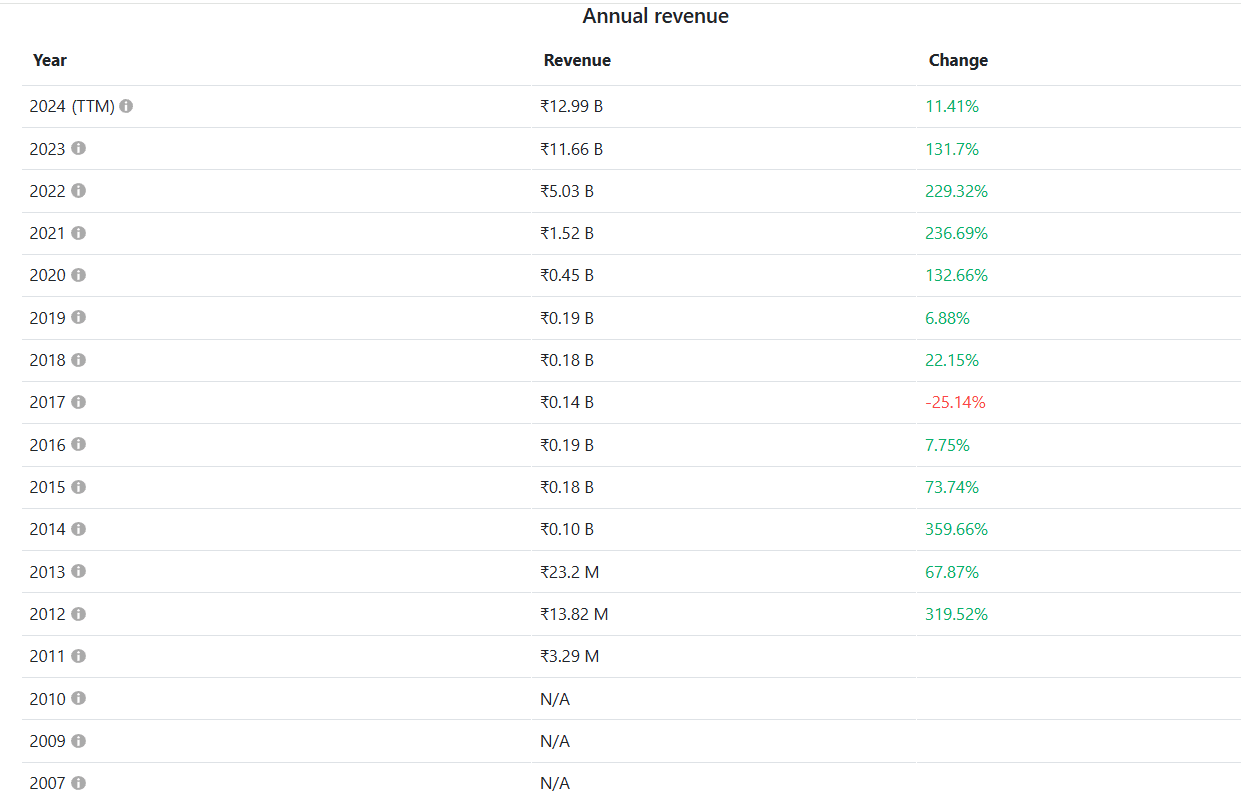
Source:
Companies Market CapWant to have insight into a Blinkit revenue model, let's have a quick look over how Blinkit makes money.
Delivery Charges
To motivate customers to increase their order size, Blink collects minimal delivery fees on small orders. The delivery charge mainly depends on various factors, including:
- Customers location from a dark store;
- City
- Demanding delivery slots
- Peak hour price
Commissions from Brands
Blink charges commissions from its partnered stores to sell their items on its platform. Suppliers have to pay depending on various criteria, enabling the company to make money and satisfy the growing needs of customers. The company delivers high-value items in less than 30 minutes through its express dark stores.
In-app and Sponsored Advertising
Brands can improve their visibility by advertising on the platform through:
- Banner Ads
- Sponsored Listings
Albinder Dhindsa, executive of a Zomato-owned quick-commerce platform said, "The gross order value year-over-year showed faster growth for Q3 of FY24. The ads revenue sees over threefold surge during the same period"
He added, "Brands looking to boost their online visibility can spend on Q-Commerce - popular transacted categories.
In-app advertising and sponsored listing help brands to be visible to customers when they are looking for products that are similar to them.
Blinkit Plus
Customers can enjoy benefits like discounts and free delivery by choosing a monthly subscription package. This Blinkit model helps the company keep customers coming back ensuring recurring revenue.
Private Label Products
As stated above, Blinkit offers a wide variety of products to its customers including personal care and pantry staples. With high-profit margins, these private-label goods help Blinkit to make a great profit share.
Dynamic Pricing Model
The dynamic revenue model of Blinkit helps the company to maximize revenue during times of intense usage. Blinkit charges for peak hours for specific slots and delivery products. This model helps the company to manage its dark store resources and meet the demand efficiently.
Bulk Partnerships
In urban centers, Blinkit partners with brands to meet the demand for bulk orders. This helps the company generate additional money via high-valued items. Blinkit meets the broader customer base by selling a maximum number of items, ensuring to boost the average order value for the company.
Challenges in the Blinkit Model
Undoubtedly, a Blinkit business model has gained popularity, but it comes with various challenges. Due to the requirement for multiple dark stores and steady delivery logistics, this quick-commerce Blinkit model results in operational costs. To cover this high cost, Blinkit focuses on increasing order frequency and boosting customer retention.
The q-commerce model of Blinkit encourages large orders via loyalty and promotional advantages. Besides, other q-commerce players and traditional e-commerce giants raise other challenges for Blinkit. Today everyone is vying for the same audience, hence it becomes essential for Blinkit to find new ways that encourage their potential customers to order from them rather than their competitors.
Business Model of Blinkit: What is the Future of It?
Blinkit's business model is worth it for urban areas with great demand. However, the company is trying new ways to meet the growing demand. Blinkit also focuses on other tiers, including:
- Subscription tiers
- Partnerships with brands
- In-app advertising
- Private-label products
- Exclusive promotions
Blinkit is expected to invest in green initiatives to be a responsible leader in quick-commerce. Blinkit model - revenue and business help the company to stay competitive and focus on scaling its services across India.
Are You Ready to Launch Your App Like Blinkit?
Blinkit leverages the power of speed to build a quick-commerce model to align with modern customers. Through dark stores and various streams, Blinkit has gained its place in competitive India's q-commerce sector. In short, Blinkit's business model serves as a roadmap for a hyperlocal delivery system.
Are you inspired by the business model of Blinkit? Want to launch your delivery app to deliver anything to customers' doorsteps? We can provide you with ready-to-use solutions at pocket-friendly prices. It consists of all the features and functionalities that are essential for running a successful anything delivery business online. Contact us for more information at [email protected].


